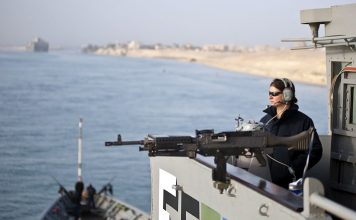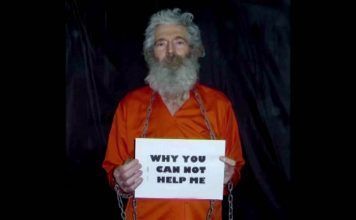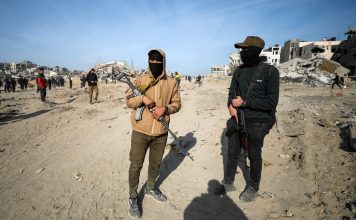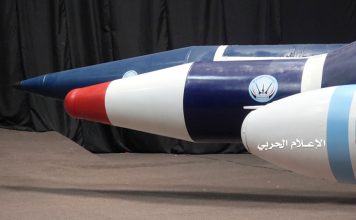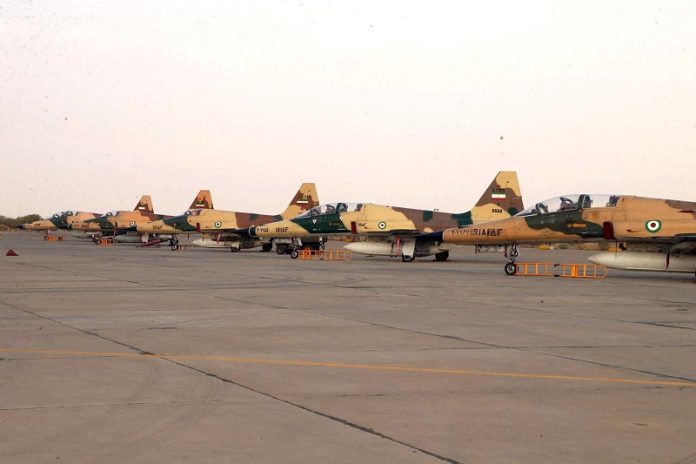
A series of Israeli operations aimed at eliminating commanders of the Islamic Revolutionary Guard Corps (IRGC) and leaders of militia groups under Iran’s control have prompted the Islamic Republic authorities to take measures to project an image of authority, strength, and defiance in the face of threats from Israel.
Notable incidents that have raised serious concerns among Iranian officials for their personal safety include the assassination of Ismail Haniyeh, head of Hamas’s political arm, on July 31 in Tehran, and the killing of Hassan Nasrallah, leader of the Lebanese Hezbollah, on Sept. 27 in Beirut.
After Iran’s Oct. 1 missile strike against Israel — in response to the killings of Nasrallah and of a senior IRGC commander, Brigadier-General Abbas Nilforoushan — Israeli Prime Minister Benjamin Netanyahu issued a direct warning to the leaders of the Islamic Republic, stating: “There is nowhere in Iran or the Middle East beyond the reach of the long arm of Israel.”
IRGC Officers, Russian Representatives, NATO Members Meet in Tehran
Israeli officials and sources warned that in response, they were exploring options such as targeting Iran’s nuclear facilities; striking its oil refineries, including the Kharg oil terminal in the Persian Gulf; and conducting assassinations of officials and leaders in the Islamic Republic.
Meanwhile, on two separate occasions, the Israeli military forced a Fars Air Qeshm Boeing 747 cargo plane to return to Iran in mid-flight. The aircraft was flying from Tehran to either Beirut or Damascus. A report from The Times of Israel claimed that these flights were carrying weapons intended for Hezbollah when they were intercepted by the Israeli Air Force.
Recent events in the Middle East have sparked considerable concern about Israel’s potential actions. High-ranking Islamic Republic officials are feeling pressured to show that they are not intimidated by them.
Nearly all flights from Iran’s central and western corridors have been halted because of concerns over a potential Israeli attack, forcing Iranian President Massoud Pezeshkian to take a special presidential flight from Tehran to Qatar on Oct. 2.
Some domestic media outlets referred to Pezeshkian’s journey to Qatar as a “dangerous trip” to showcase and bolster the perceived “courage” of regime officials. Two to three Phantom F-4 aircraft from the Islamic Republic Air Force escorted Pezeshkian’s plane. A video was released showing Pezeshkian conversing with a pilot or with air traffic control, and saying: “We are proud of the existence of heroes such as yourselves and the security you provide for the country!”
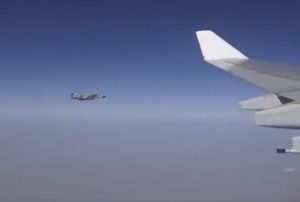
One of the primary challenges facing Iran’s air fleet is the deterioration of the fleet of fighter planes operated by the Islamic Republic of Iran Air Force, as compared to the more advanced fighter jets flown by the Israeli military, particularly the F-35.
The aircraft that accompanied Pezeshkian were from the Imperial Army and were at least 50 years old. Critics of the regime remarked that the Islamic Republic was in such a dire state that it had to rely on outdated Phantom jets from the era of Mohammad Reza Shah Pahlavi to project its authority and power.
Meanwhile, Supreme Leader Ali Khamenei delivered the Friday prayer sermons on Oct. 4 under heightened security measures as a show of “courage.” Supporters of the regime referred to Khamenei’s at Tehran’s Grand Mosalla Mosque as “Nasr Friday,” which could be translated as “Friday Victory.”
Security forces cordoned off the streets leading up to the mosque a full day in advance, and during Khamenei’s sermons and speech, all aircraft were prohibited from flying over Tehran.
To reach a wider audience in the Middle East, Khamenei delivered part of his sermon in Arabic, stating that the dedication of the U.S. and its allies to ensuring Israel’s security served as “a facade for the lethal strategy of transforming the [Israeli] regime into their instrument for seizing all the resources of this region and deploying them in significant global conflicts.”
“This situation leads us to realize that any assault on the regime by anyone or any group benefits the entire region and entire humanity. The [Israeli] regime epitomizes evil,” He added.
Many regime supporters, including high-ranking officials, have voiced concerns about Khamenei’s safety.
In media interviews, officials lauded Khamenei for leading the Friday prayers on Oct. 4, describing it as a “demonstration of strength and bravery,” “historic and defeating enemies,” and a “display of resolve for Muslims.”
The apprehension about potential repercussions from Israel’s actions was so intense that Ali Khomeini, the grandson of Ruhollah Khomeini, the founder of the Islamic Republic, remarked: “We bow in gratitude at Khamenei’s bravery.”
Regime opponents joked that the Islamic Republic’s leaders “aim to transform the White House into a Hosseinieh [a sanctuary used by Shia Muslims for religious gatherings] and pray in Qods [Jerusalem], but their situation has deteriorated to the point where praying in Tehran has become their symbol of courage!”
It is important to note that senior military officials from the Islamic Republic were absent from the ceremony on that day.
Tehran framed Iranian Foreign Minister Abbas Araghchi’s recent visit to Beirut and Damascus as a “significant demonstration of authority” by the Islamic Republic.
The visit occurred during a time when Israel had prohibited Islamic Republic aircraft from landing in Lebanon and Syria, while many international airlines had ceased operations in the area because of heightened security concerns.
Regime supporters characterized Araghchi’s journey as an “assertive and bold maneuver.” Internal reports suggested the trip served not only as a diplomatic effort but also as a strategy to counteract Israel’s blockade of Iran.
Supporters circulated a video capturing the moment Araghchi’s plane touched down at Beirut airport despite Israeli threats of military action, saying: “Araghchi arrived at Beirut airport when taxis wouldn’t go there, not even for $100.”
Political figures within the regime emphasized that Araghchi’s visit to Lebanon and Syria was both “brave and authoritative,” and some even claimed that this trip showed that “the initiative lies with Iran!”
Others contend that Israel was aware of Araghchi’s travel plans, including the timing of his flight and arrival. They argue that if Araghchi faced no danger; it was not because of his courage but because of Israel’s intentional inaction.
In an interview on Oct. 5, Araghchi said: “The purpose of my visit to Damascus and Beirut is to convey that Iran will stand by the resistance regardless of the circumstances.”
The next day, on Oct. 6, Oil Minister Mohsen Paknejad visited the Kharg oil facilities to assert his authority and navigate a challenging situation. Reports suggest that one of Israel’s potential methods of retaliation could involve targeting the oil terminal on the island. The offshore oil terminal is a crucial conduit for Iran’s oil exports.
The aggressive actions of the Islamic Republic have compelled neighboring countries to respond, as they perceive a significant threat from the incursions of the IRGC and its affiliated groups.
Three days before the first anniversary of the Hamas terrorist attacks on Israel on Oct. 7 — which Human Rights Watch has described as a “crime against humanity” and a “war crime” — Khamenei told crowds during Friday prayers that the attacks were “logical,” “necessary,” and “legal.”
He added that “any blow to Israel is a help to humanity.”






